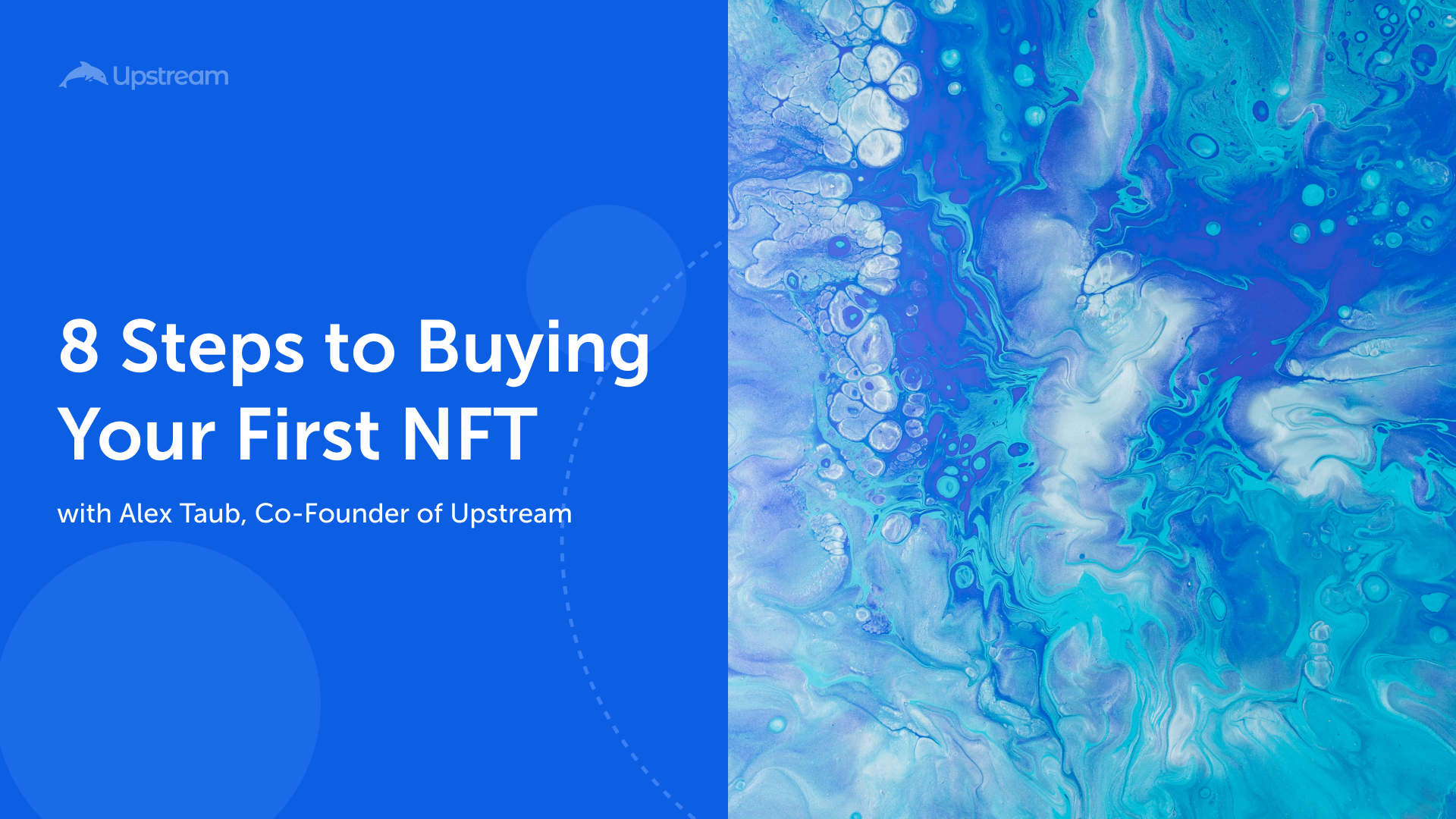
Introducing Upstream Collectives
The future of transparent, efficient, & equitable communities is here.
We’re very excited to announce our newest product: Upstream Collectives.
An Upstream Collective is a virtual community with a shared ethereum wallet. Members contribute money to the Collective and vote on how to use the funds.
Building on the infrastructure of our first product “Upstream Communities,” we added community wallets, governance procedures, and voting processes so our communities can govern and fund themselves.
The communities of the future are transparent, equitable, and run by their community members. They are Collectives.
An Upstream Collective is a DAO, Evolved
The demand for equity, transparency, and ownership in communities is exemplified by the growing popularity of organizations known as “DAOs,” decentralized autonomous organizations.
In the simplest explanation, a DAO is an internet community with a shared bank account. Today as of writing this, there is $15.3B+ in AUM held across 176 DAOs and growing every day. (DeepDAO) You can read more about DAOs here.
Despite the momentum, we’re still in the early innings for DAO adoption. DAOs today are hard to join and difficult to use, because crypto jargon is the industry standard. Many DAOs are inaccessible due to the high financial barriers to entry. We are committed to changing this.
The landscape for running a DAO is extremely fragmented. You piece together your DAO technology stack across several platforms, such as governance on Aragon, voting on Snapshot, community on Discord, Treasury on Juicebox, and Token Gating on Collab Land.
With Upstream Collectives, we took all the features needed to run a DAO and brought it into one place. An Upstream Collective is a DAO, evolved.

More than just simplifying the DAO technology stack, we are committed to simplifying the language used to talk about self-governed communities. Choosing to call the product a “Collective,” not a DAO, was an intentional choice for this exact reason.
We don’t need more crypto jargon, we need words that are descriptive. The only way to increase the adoption of tools using blockchain and web3 technology is to use accessible language.
We build the community tools of tomorrow by iterating on the best of early DAO and web3 technologies and making it so easy to understand that any person with internet access can use them today.
How Does an Upstream Collective Work?
By holding a community’s funds in an ethereum wallet, Upstream Collective members can contribute money into the community, write proposals for how the money should be used, and vote on all the decisions made by the community.
When a proposal passes, designated representatives execute the decision on the blockchain and it can be viewed by all members of the Collective.
Upstream Collectives Solve a Community Pain Point
The problem we’re solving is that today’s community tools are built on yesterday’s technology, not tomorrow’s.
Today, a person running a community collects money through a hodgepodge of Paypal, Venmo, bank transfers, cash, and checks.
To vote on decisions, communities use a combination of Google surveys, SurveyMonkey, or manually count raised hands at a meeting.
The community leader ultimately controls what the community does with its money. There is no accountability, participation, and transparency for the rest of the community.
We’re taking what we learned over the past two years at Upstream hosting 500+ communities, 5,000+ events, and being the community tool of choice for 25,000+ community members to build Upstream Collectives to support all the actions of an engaged community.
Community Tools Need to Catch Up to How Our Communities Have Evolved
The ability to collectively contribute money as part of a community is not a novel idea. We’ve been paying community dues since the beginning of time, be it to your book club, church or synagogue, poker group, or club sports team. While the way we come together as a community has evolved, the tools with which we organize these communities has not.
The first phase of communities, “Community 1.0,” was IRL. Bound by geography, capacity constraints were physical. Think sports teams, places of worship, sororities and fraternities, book clubs, bridge clubs, and every community in between.
The second phase of communities, “Community 2.0,” was URL. Think Friendster, Myspace, Tumblr, Reddit, Instagram, Twitter, Discord, Slack. No longer constrained by geography, people were able to gather around shared affinity and interests.
We are now entering the third phase of community, “Community 3.0.” There is a demand for greater accountability, governance, and input into how communities are making decisions and using their money. Upstream Collectives make it possible for a community to run, fund, and govern itself.
Our Team Has the Right Combination of Crypto & Community Experience
In many ways, the Upstream Collective product feels like the one we were always destined to build.
Nine years ago, Michael, my co-founder and Upstream’s CTO, and I joined Dwolla. To set the scene, Bitcoin was under $5 on the day we joined. Dwolla was one of the first companies to work with Bitcoin and blockchain, and we have long been committed to making crypto more accessible.
Over the past two years at Upstream, we have built a thriving community of generous and fascinating entrepreneurs, investors, and professionals.
It feels natural to supercharge our communities with tools built on the blockchain for more efficiency, equity, and transparency. We couldn’t be more excited to take this next step with the Upstream community.
You can join the first Upstream Collective as a beta user in our NFT Community here.
If you want to host your own Upstream Collective, you can reach out to learn more here.
Want to learn more about Upstream Collectives? Check out this video!






